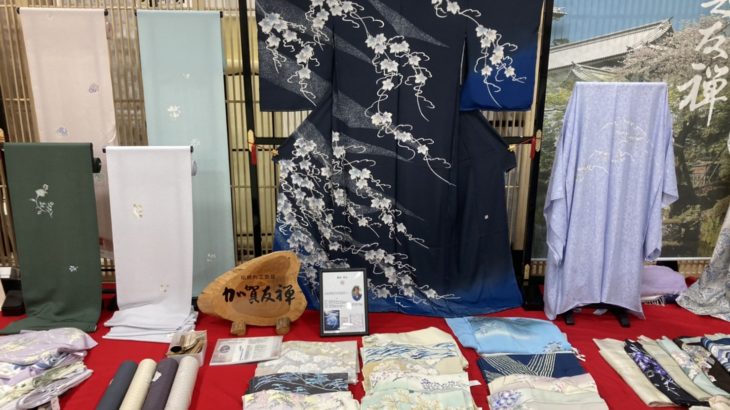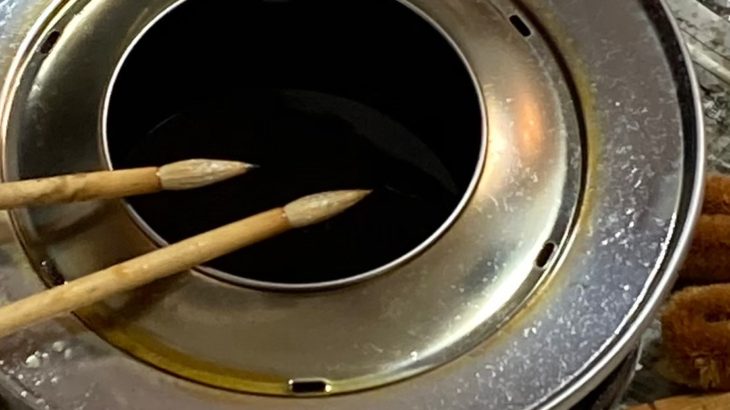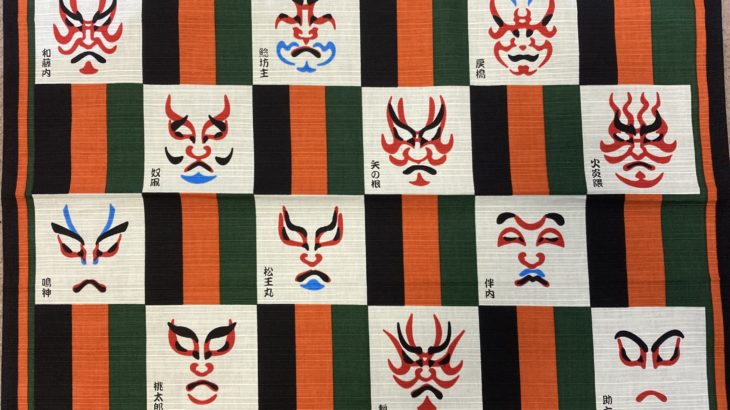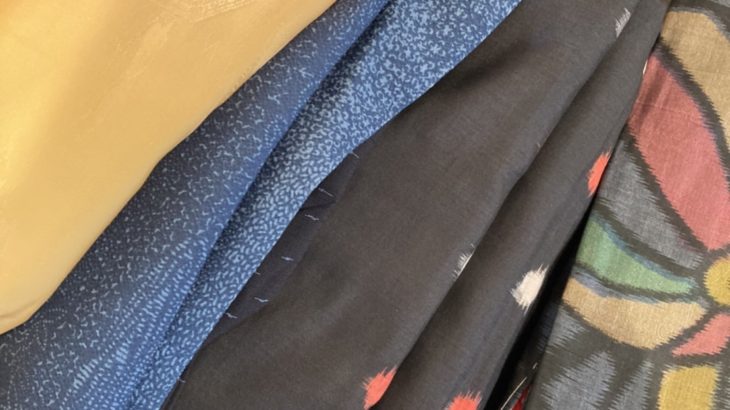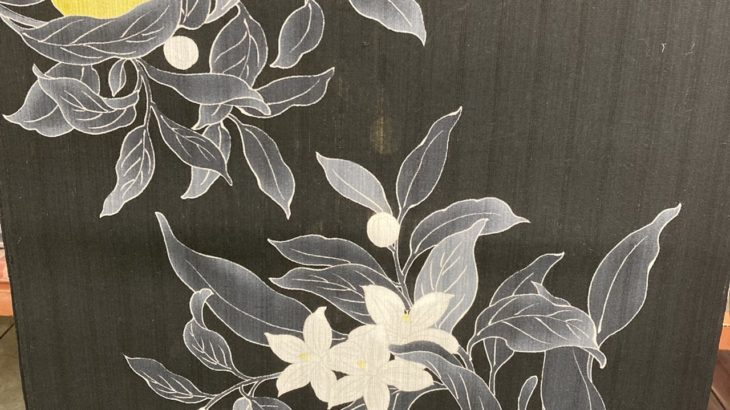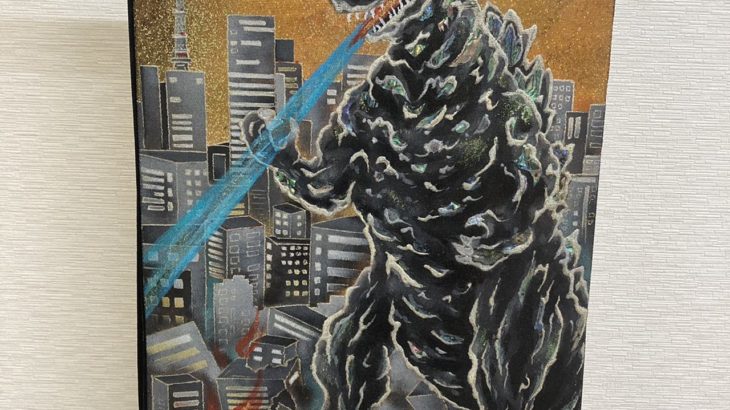Hello, I’m Shinji aka Warashibe Choyja (Straw Millionaire).
This time, I will talk about “Japanese kimono” that I have been involved in for nearly 20 years.
There are two types of kimono: formal kimonos that participate in ceremonies and everyday kimonos that you can wear at any time. In addition, each kimono has a kimono that suits the four seasons of Japan and how to make it. Roughly speaking, spring … HITOE, summer … USUMONO, autumn … HITOE, winter … AWASE, single clothes and AWASE have different seasons depending on how they are tailored. What is called USUMONO is called SYA or RO, and the weaving method of the kimono fabric itself is different. There are countless techniques for dyeing patterns such as Yuzen, gold, Japanese embroidery, and batik. Some dye the thread first, while others dye the woven one, and there is also a distinction between formal wear and everyday wear depending on the weaving method and dyeing method. The types of obi and how to match them are also distinguished.
Those overseas who read this article will be told that it is “too difficult”. In fact, it is said that it is difficult for many Japanese to distinguish even in Japan. I would like to write an article that everyone can study as much as possible. This time, I would like to talk about the case of kimono. I will talk about the difference. Kimonos are different depending on the place you are going to wear.
Kimono type
TOMOSEDE
… Wedding (worn by the bride’s mother, matchmaker, etc.). It will be the first dress for married women, and the symbol mark of the house called KAMON will be put on the back, behind both sleeves, and both chests. (I will talk about KAMON on another occasion.) This inherits KAMON from the father for men and the mother for women from generation to generation. TOMESODE is a kimono with a black body and a pattern on the front hem called the front body.
IROTOMOSODE
… A prestigious ceremony such as a wedding ceremony or a garden party. KAMON is on the back and behind both sleeves, and like TOMESODE, there is a pattern on the front hem. However, the colors are other than black, and there are many calm and elegant colors.
HURISODE
… Coming-of-age ceremonies, weddings, graduation parties, New Year, etc. It is the first dress for unmarried women, and in Japan, it is a kimono that is often worn at 20-year-old celebrations, and the sleeves are made longer than normal kimono. This also has its origin, and there is a story that TOMESODE was made long to wrap the man I loved, kept short sleeves, and dyed black so that no one would dye it anymore. ..
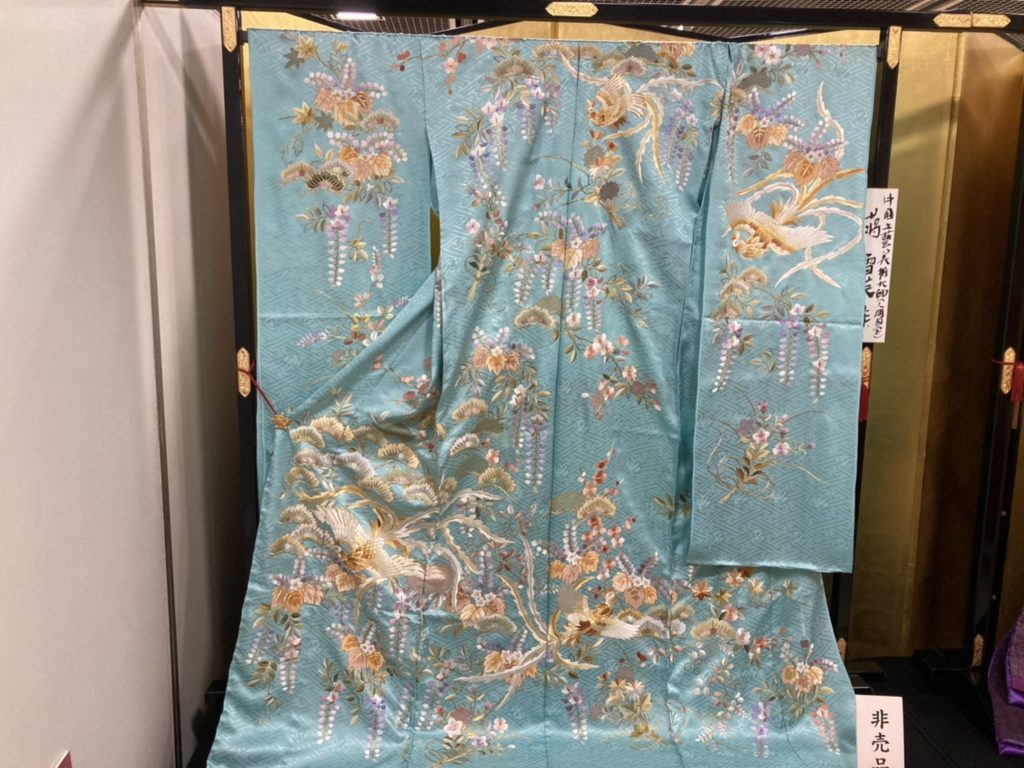
KUROMONTSUKI
… In modern times, wakes and funerals. Miss Mrs.’s first dress, with KAMON on the back, behind both sleeves, and on both chests. The whole body is black and there is no pattern. In the past, I used to wear gold and silver obi and went to weddings, but nowadays, TOMESODE is the main kimono, and it is becoming a kimono that can only be worn with regret. For this reason, it is called MOHUKU, but at some high school graduation ceremonies, it can still be worn as a celebration with a hakama.
HOUMONGI・TSUKESAGE
… Celebration seats for weddings, parties, New Year, tea parties, etc. In the dress of Miss Mrs., there are many gorgeous kimonos with patterns on the front hem, sleeves, and chest. The difference between HOUMONGI and TSUKESAGE can be distinguished by the way the patterns are connected, but the one with a different way of making kimono and simplified patterning is TSUKESAGE.
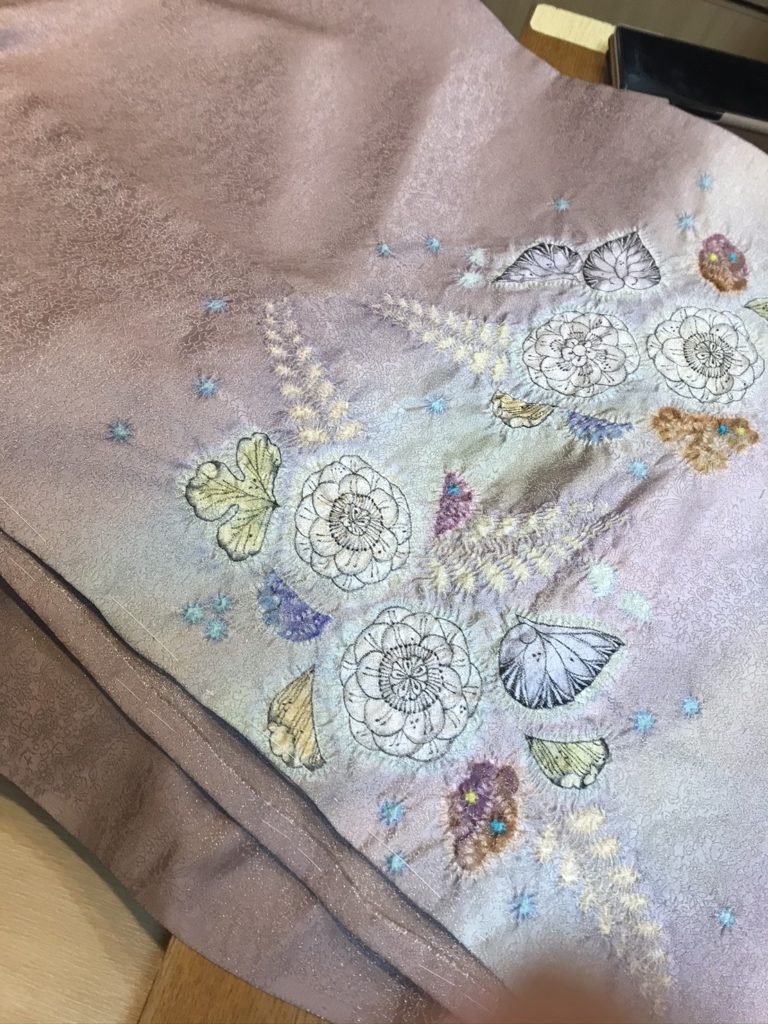
IROMUJI
… Tea party / New Year, entrance ceremony, graduation ceremony, Shichigosan and shrine visits (parents and grandmothers), everyday wear. It’s a quasi-formal dress for Miss Mrs., and although it’s a formal occasion, it’s often worn in a slightly modest position. Depending on how you match the obi, you can wear it on a regular basis, and it will be a wide range of kimonos to wear. It has no pattern, is dyed in one color, and may have a family crest on its back. If KAMON is included, it will have the same rank as TSUKESAGE and can be used for celebration clothes.
This is the kimono that you can wear as a formal wear. From here, it becomes a kimono that you can wear everyday.
KOMONO
… It will be a kimono that looks like a dress in clothes. Many of the same patterns are repeated, and there are various types of KOMON. There is a slightly special one called Edo Komon, in which fine patterns are lined up using a paper pattern. The pattern of the samurai proof was dyed on the kimono in the Edo period, and the technique still remains, and this EDO KOMON can be worn at the same prestigious ceremony as IROMUJI. In the Edo period, you can tell which area you are from by looking at the pattern of the kimono, and typical ones are “SAMEKOMON”, “MANSUJI”, and “ARARE”.
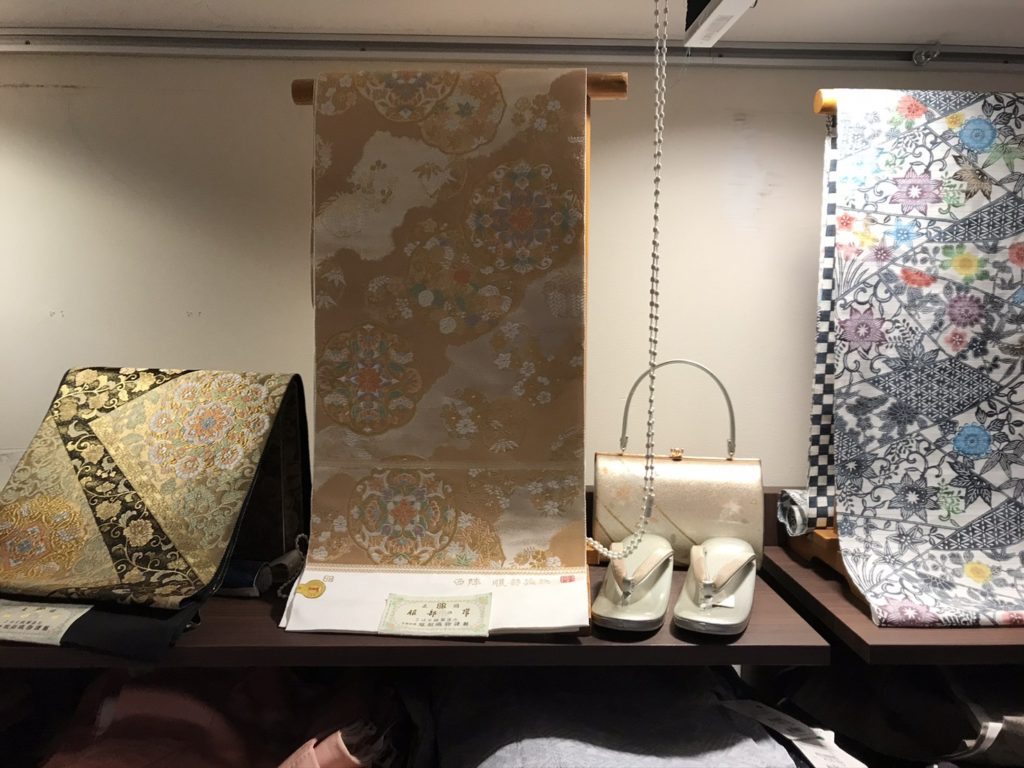
TUMUGI
… Basically, it is a kimono that is woven by dyeing the threads first. Typical examples are OSHIMA TSUMIGI (Kagoshima Prefecture), YUKI TSUMUGI (Ibaraki Prefecture), and USHIKUBI TSUMUGI (Ishikawa Prefecture). YUKI TSUMUGI is considered to be the oldest silk fabric in Japan, woven during the Nara period (710-794), and remains stored at Shosouin in Nara Prefecture. I think that there are many people who cannot hide their surprise from the fineness of the pattern of OSHIMA TSUMIGI. When dyeing the thread, make a mark and dye it, and then re-weave it according to the pattern. Someday, I’d like to talk hotly, but anyway, it will be a kimono woven with time-consuming techniques. However, no matter how elaborate it may be, the TUMUGI is usually worn, so it should not be worn at weddings and other ceremonies.
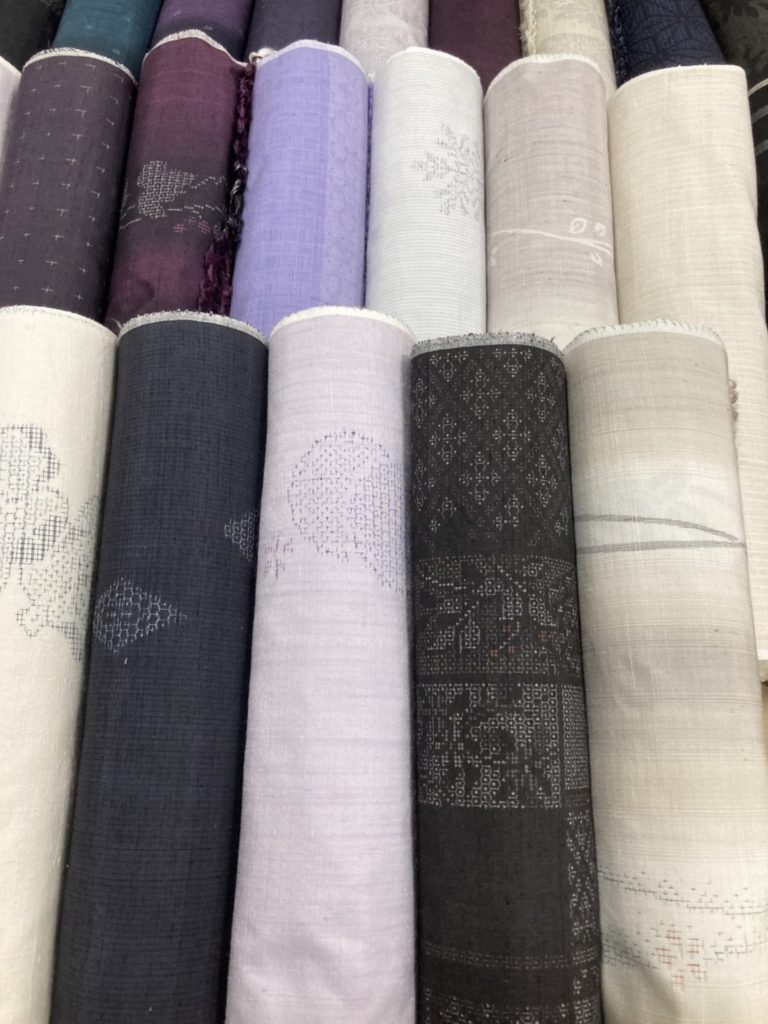
YUKATA
… YUKATA is synonymous with kimono that foreigners have seen. I don’t think it’s necessary to explain, so let’s talk a little about the history of YUKATA. Originally called YUKATABIRA, YUKATA is the kimono you wear when you take a bath. In the old days of Japan, YUKATA was worn in a bath like a sauna instead of a bath like a hot spring, and was used to absorb sweat and hide the body. In modern times, it has become established to be worn as a summer tradition.
Obi type and case
Like kimono, kimono has an obi. In fact, the coordination of the obi changes so much that it is difficult for me to judge without looking at the actual obi. So I will talk briefly
MARUOBI
… Woven wide, fold in two and sew. Originally, it was the highest grade obi, but it became unpopular if it was heavy and not easy to use by weaving it on both sides, and it is hardly woven even in Nishijin (the production area of the obi).
HUKUROOBI
… A obi woven with a width that is half the width of MARUOBI. The width is fixed at 8SUN (about 9.54 inches). Depending on the pattern, it can be divided into formal and casual, but in simple terms, gold and silver threads are used for formal wear.
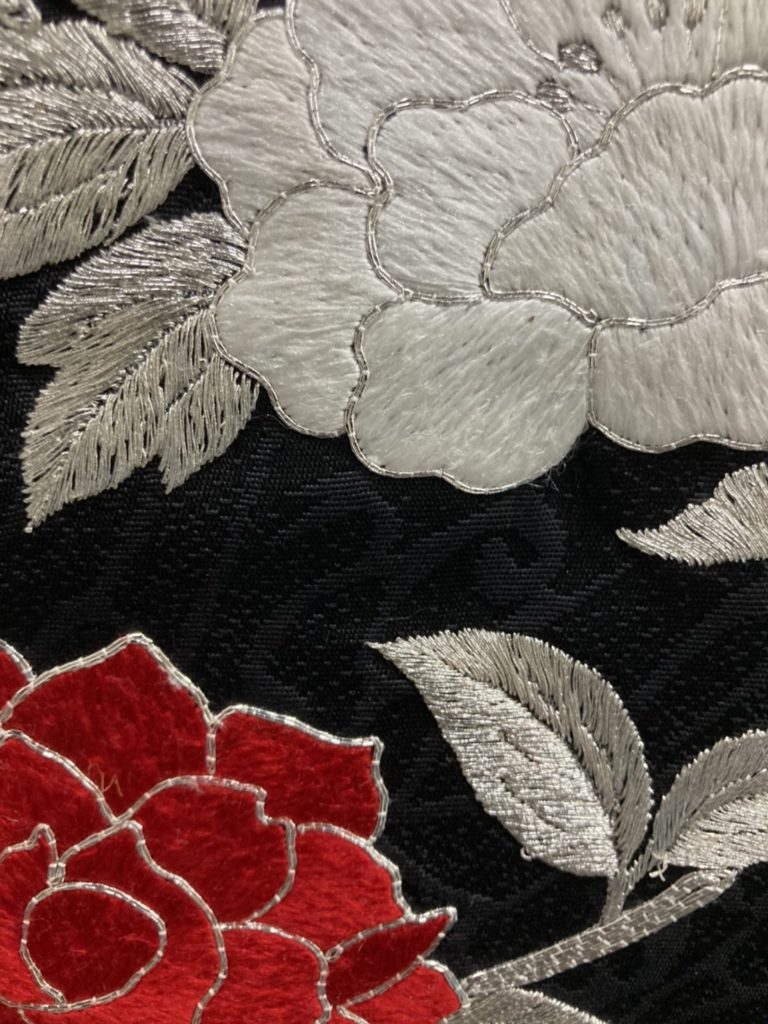
NAGOYAOBI
… There are things called KYUSUN NAGOYAOBI and HASSUN NAGOYAOBI. The width is different from 9SUN (about 10.73inch) and 8SUN (about 9.54inch). There are differences depending on the nature of the fabric, but most of them are casual, and some of the old ones have a weave called spelling, which is used for formal wear. Again, it’s difficult to tell if you don’t look at the official rating, but NAGOYA OBI has many casual items.
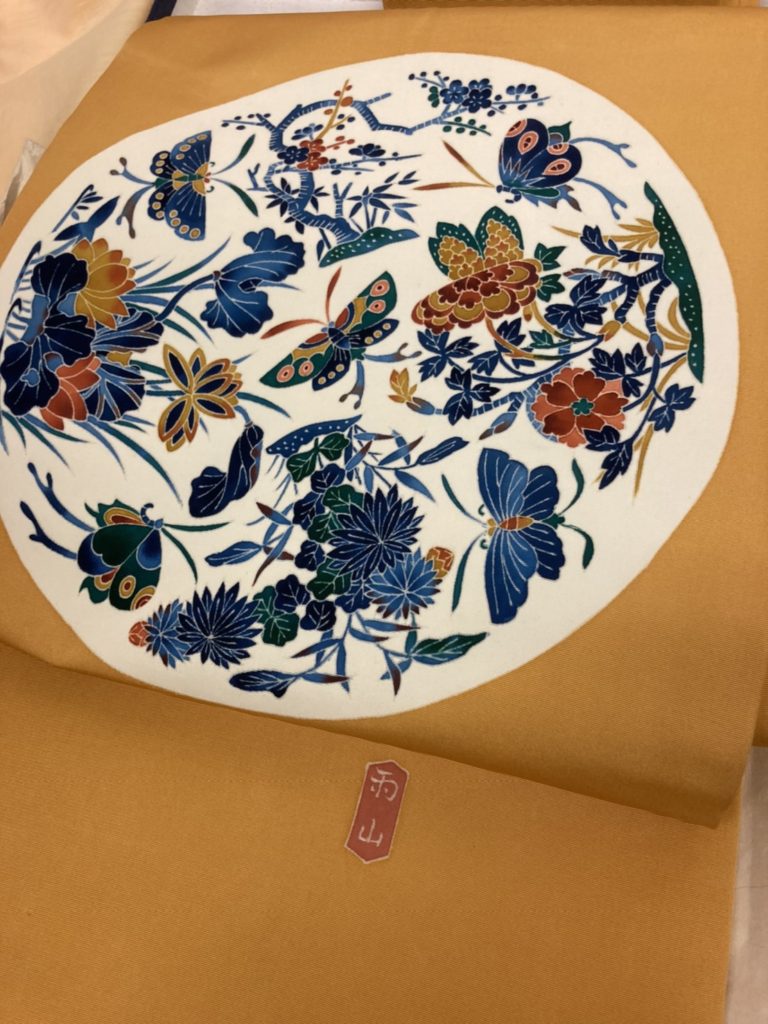
HANHABA OBI
… All of the obis mentioned above are folded in two when worn, but the half-width obi is woven into 4SUN (about 4.77inch) from the beginning, so use it as it is. Even if you are wearing it for the first time, you can easily wear it by watching YouTube. If you wish, I’ll make a dressed YouTube.
By the way, men’s kimono can be worn in 5 minutes. I think that new employees practice at the kimono shop first, and at the earliest, they can fully learn in an hour. Again, if you wish, I’ll make YouTube soon.
Small case
There are some small items that you need to wear a kimono, but I would like to briefly introduce them as well.
HANERI
… A patch cloth on the collar of NAGA JYUBAN (a kimono worn under the kimono). When wearing kimono, officially wear underwear, NAGAJYUBAN, and kimono in that order. What you can see on the collar is the collar of NAGAJYUBAN. There are patterned ones, lace ones, embroidered ones, etc. We recommend the one that matches the kimono.
OBIJIME
… A small item used when tying a belt and used for the part that looks like a belt. This is also different depending on the weave and pattern. You can also enjoy color matching here, which will greatly change the atmosphere of your kimono.
OBIAGE
… This is also a small item used when tying an obi, and it looks like a cloth. It will be a small item that you can only see a little at the top of the obi, but the atmosphere will change greatly depending on the color matching.
ZORI
… The height of the heel and the thong change the case. Basically, the higher the heel, the higher the rank. It’s okay if you think that enamel and gold and silver are formal. The one used by Maiko is called “Pokkuri” and is different, so the real thing is expensive.
BAG
… Basically, what is shining is formal. Many people have a sub-bag because the kimono bag can only fit a mobile phone, wallet, or handkerchief. Originally, it was a bag without a handle, and it was made so that it could be put in a drum with an obi, so the remnants of it still remain.
Other differences
Actually, there are other subtle differences in kimono, so I’ll talk about that a little.
How to put on a kimono
… It is customary to wear formal wear a little longer when wearing a kimono. This is said to be a remnant of the old custom of not exposing the skin much in a formal place. If you have a chance to see a kimono in Japan, you can see someone wearing a kimono with the hem barely touching the floor. So, as I mentioned earlier, you can see that many formal ZORI sandals have high heels.
Difference between HAORI and COAT
… I think many people think that both are worn on top of kimono. In terms of clothes, a coat is like a coat and a haori is like a jacket. Inside the building, you can take off your coat, but you can’t take off your haori, right? The same is true for kimonos, and it is good manners to take off your coat at the entrance to the building to prevent dust and dirt from being brought in. The haori is the same as the jacket, so you won’t take it off. In clothes, you wear a coat over your jacket, right? Even in kimono, wear a coat on top of the haori. Therefore, the haori coat (the length from the back stitch of the kimono to the cuffs) is longer than the kimono, and the coat is made longer than the haori.
As I forgot to say, basically all kimonos are made to order. Nowadays, many finished kimonos are sold, but basically, a Japanese dressmaker called Nuiko sew them by hand according to the size of each person. Nowadays, the number of people who wear Japanese dressing has decreased, but any family can do Japanese dressing, and they will be sewn and worn as their children grow up. The kimono fabric is an elongated fabric with a width of about 1SUN (about 1.19 inch) and a length of about 4 JYO (about 39.76 feet), and this length is suitable for Japanese people of most heights. The word mottainai has become a universal language, but one of the characteristics of kimono is that you can wear one kimono as you grow. In particular, the kimono called Tsumugi is strong, and there are words such as Oshima Sandai and Yuki Suedai. You can do things. It may be a feature of kimono that is different from clothes that you can wear it for 10 to 20 years. You may be able to easily see a kimono 100 years ago or a kimono 200 years ago. You may be surprised by foreigners, but in Japan, where things are important, kimonos from 100 years ago are commonplace, and if you do your best, you can get them. There are words such as “groom” and “naked consistent” in Japan, but in old Japan, “kimono = clothes” was very expensive and was kept very carefully. I will introduce it if there is an opportunity, but there is a Japanese closet called “Chest of drawers”, which is a natural tree that does not allow moisture to pass through when the humidity is high and allows moisture to pass through when the humidity is low, and adjusts the humidity all year round. There is a closet made of wood, and since it was stored there, many old kimonos remain even in ordinary households. It is difficult for fire to pass through, so even if the house burns due to a fire, many of the items will remain inside.
I will return to the story because the story has shifted, but there are customs and sayings about kimono, but if you are wearing Japanese kimono as fashion, please enjoy wearing it. I’m glad that he is involved in kimono. I hope that you will understand the history and customs of kimono.
In a small island nation, it begins with valuing the connections between people and how to celebrate each and every milestone in life, as well as how to celebrate that person’s milestones. .. It has been said in recent years that Japan is a hospitality, but thanks to the fact that such customs have been practiced since ancient times, the actions that all Japanese people take without thinking will lead to actions that are called hospitality. It may be.
